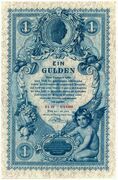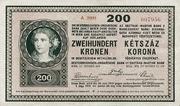Ferdinand Schirnböck
Ferdinand Schirnböck (27 August 1859, Oberhollabrunn, Lower Austria - 16 September 1930, Perchtoldsdorf, Lower Austria) was an academic painter and engraver. Ferdinand Schirnböck came from a family of coopers.After his father died of cholera at an early age, his mother made it possible for him to attend the Hollabrunn grammar school, where his artistic talent was already evident. He then studied at the art school of the Austrian Museum of Commerce and at the Vienna Art Academy. There he attended a special class for engraving. He initially worked in Buenos Aires and designed Argentinian banknotes and stamps, for which he also made the copper and steel engravings. In 1892 he returned to Austria and worked for the Austro-Hungarian Bank (now the Austrian National Bank) and the state printing house. Based on Koloman Moser's designs, he made the engravings for several stamp series that made him internationally famous. In 1906 he authored the series of stamps for Bosnia-Herzegovina, which deviated from the then usual depictions of heads of state and coat of arms and showed landscapes. The stamp series from 1908 on the occasion of the 60th anniversary of the throne of Emperor Franz Joseph I, which was influenced by Art Nouveau and printed in multiple colors, influenced the portrayal of portraits on stamps. In the following years he made postage stamps for Albania , Bulgaria , Liechtenstein , Norway , Poland , Russia , Sweden , Turkey , Hungary , Vatican and Siam.
Смотри также: Wikidata (Q1405753), Википедия (DE)












